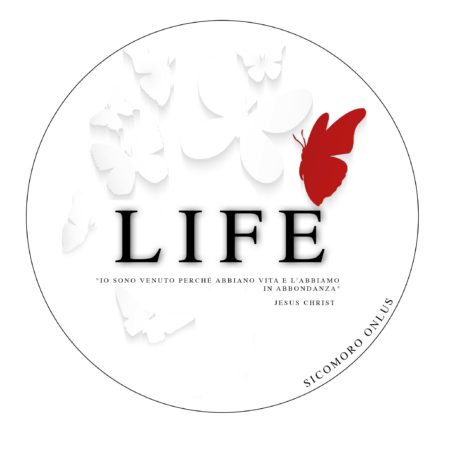Forty-Two Percent of Student Respondents Are In Love, Sun Survey Finds
By Amanda H. Cronin |
The clock tower is lit up with a magenta heart, a smattering of invitations to themed galas and club parties abound; it’s Valentine’s Day at Cornell.
To some, the holiday is a time to share their amorous adventures with the world – but to others, it may be an unwelcome reminder that they are without a partner.
Leading up to a day often known for love and heartbreak, 811 undergraduate and graduate students responded to a series of questions posed by The Sun including how often they have sex, where current couples met and how often they use dating apps.
The survey was shared via Facebook, Instagram, email, text message and GroupMe chats over a period of five days. The survey was anonymous, but collected demographic information on gender and academic year.
The majority of respondents self-identified as female – percent – compared to percent male. The remainder identified as gender non-conforming, non-binary or other. Most respondents were sophomores, at percent, followed by juniors at percent, seniors at percent, freshmen at percent and graduate students at 8.81 percent.
Leaderboard 2
Cuffing season: 45 percent of Cornell women reported being in a relationship, while only 38 percent of men said the same. 45 percent of students of both genders said they were currently single.
Of the 811 people who responded, 42 percent said they were in a committed relationship, compared to the 36 percent single, 9 percent “single and not looking” and 11 percent “single and dating.” Five respondents said they are engaged to be married, and all eight of the married couples are graduate students.
Newsletter Signup
According to the results, if you asked five students if they are in love, two would tell you that, yes, they are. However, the other two of the five would deny any romantic feelings, and the last person would say “maybe” or “I don’t know.”
Interestingly, 12 percent of those in love identified as “single and dating,” while 6 percent of self-identified singles and 3 percent of “single, not looking” said the same. Of the students that professed love, 80 percent reported being in a committed relationship.
“It’s perhaps not surprising that most people in a committed relationship indicate ‘yes’ that they are in love,” relationships researcher Prof. Vivian Zayas, psychology, said. “But this brings to mind research showing that sometimes what people say is not a great predictor of how their relationship is doing. That is, there are many reasons for saying that one is in love, even if it isn’t quite true.”
All you need is love: 40% of Cornell students are in love, another 40% are not, and the remainder aren’t sure.
“The single and not looking category is particularly intriguing,” Zayas continued. “It would be very interesting to try to learn more about the experiences of these folks. Even though they don’t have any interest in being with someone, are they hanging out with a friend and finding that they may have feelings for this person?”
Zayas conducts a similar annual study of Cornell students through the Personality, Attachment and Control Lab, and based on her sample of roughly 800 people, “approximately one-third report being in a relationship.” Zayas said. She continued to say that variances in data could be due to survey distribution and labeling techniques. “If you are in a relationship, or possibly interested in relationships, you are more likely to want to volunteer your time and answer a survey about love and relationships.”
Looking for love? Consider going out – the largest portion of Cornell students ( percent) shared that they met their current significant other while at a party. Not a party person? The second most common location was at an extracurricular activity, club or pre-professional society event ( percent). Fifteen percent of students currently date their high school or middle school sweethearts, the survey revealed. However, the largest portion of students put their location where they first met their S.O. as “other.”
“They’re not meeting in class because they’re not talking to each other in class! Nobody’s meeting in the library,” exclaimed Prof. Sharon Sassler, policy analysis and management, who teaches the popular Modern Romance course.
According to the data, Sassler’s observations have merit: only percent of couples reported meeting in class, while less than one percent of students kindled the start of an affair in the stacks. Sassler conducts similar surveys of her students over the course of the semester, and even gives them the assignment to ask someone out on a date.
The survey also touched on hook-up culture. Only percent of people answered that they have casual sex with different partners on a regular basis. It is true that this question may have discounted those who “hook up” with one or two of the same people on a regular basis. However, the definition of “hook up” itself is debated as well: Roughly half of respondents define it as making out, an equivalent portion define it as sex, while the remaining 11 percent marked it as “other.”
Afternoon delight: a large majority of Cornell students reported having intercourse at least a few times in the past year.
About 30 percent of surveyed students reported that they engaged in sexual activity a few times a week, while percent reported having sex a few times a month. The majority of freshmen replied “infrequently” or “never,” which Prof. Sassler said is most likely because they are “coming to figure out what college is like.”
Only 3 percent of respondents reported having sex a few times a day, and the majority of these respondents were sophomores.
Important to note – the title “Cornell Relationships Survey” and how the survey was distributed likely aplicações de datação bbwcupid had an effect on the demographic of respondents. Additionally, in questions about relationships, students who are not currently involved in one could choose a “not applicable” option that removed them from the data sample. Prof. Zayas also cautioned to be aware of self-presentation bias, “sometimes what people say is not a great predictor of how their relationship is [actually] doing.”
When it comes to dating via apps or websites like Tinder, Bumble, Grindr or Match, 10 percent more males ( percent v. 6.72 percent females) said they use them often. 34 percent of both males and females said they use dating apps occasionally.
It’s no surprise that Cornellians are committed, but it turns out that this mindset carries over to relationships, too: The majority of respondents currently in relationships have been dating for between six months and three years. And the likelihood of being in a relationship longer than a year increases with every progressive academic year.
“I’m happy to see that so many are in relationships, because [my students] often tell me that they’re too busy,” Sassler said. “Relationships add to your life. Usually a positive, as long as they don’t suck up all your time.”

